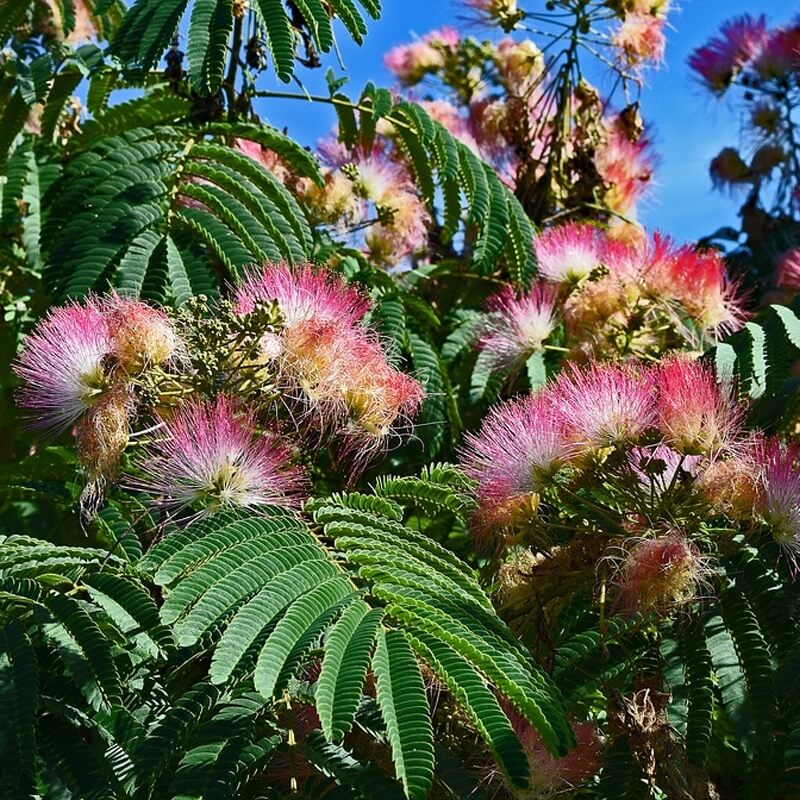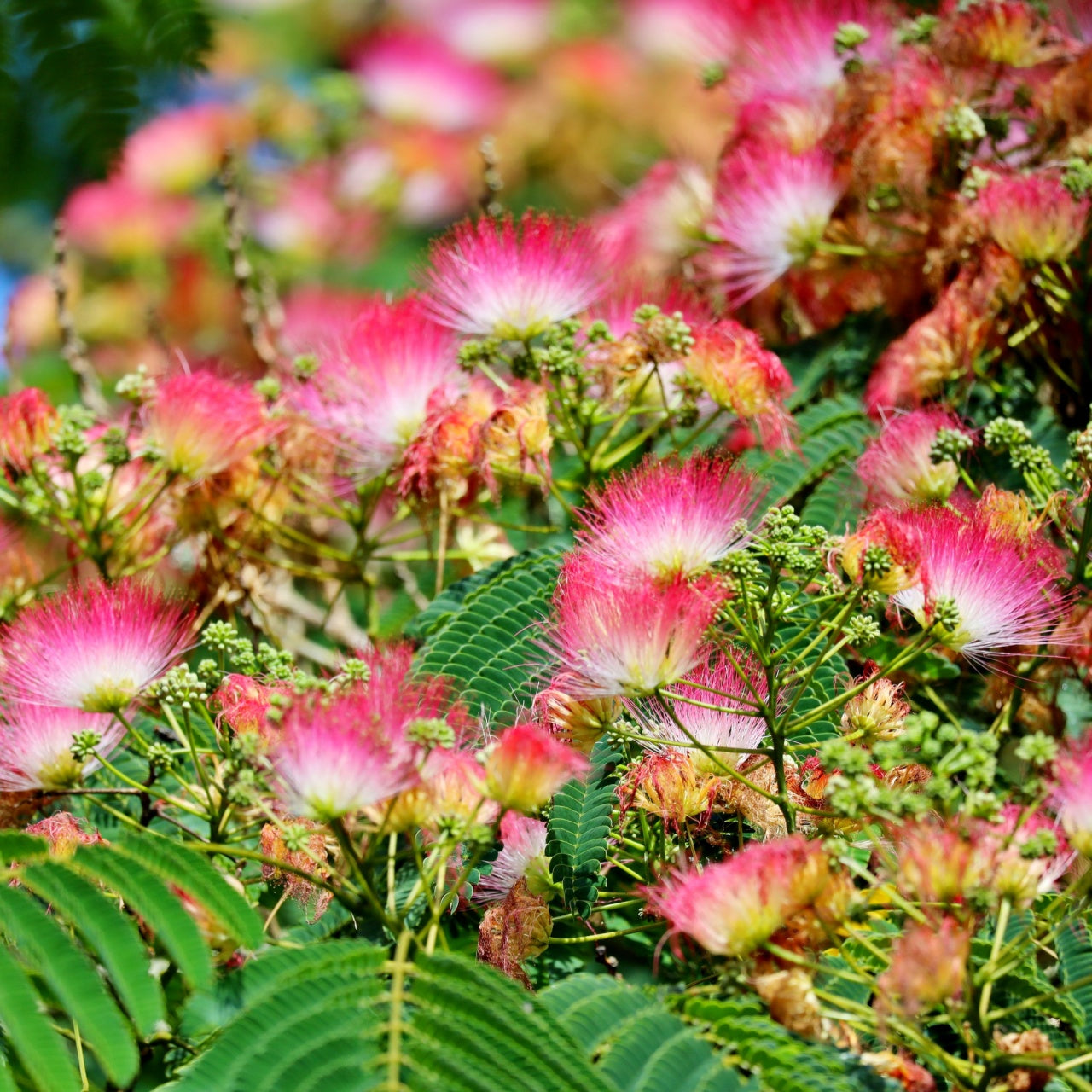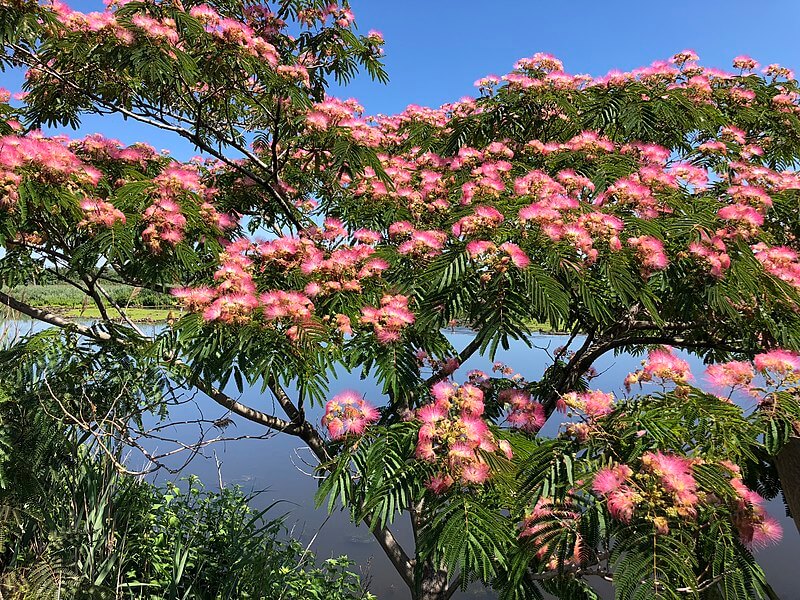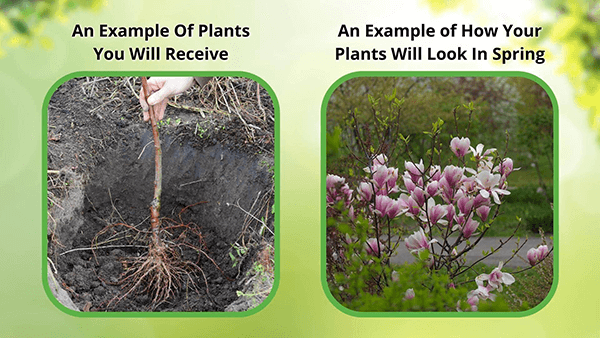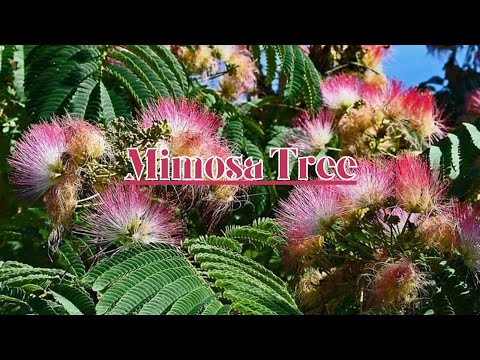Mimosa Trees For Sale - Persian Silk Tree
The Mimosa Tree, Albizia Julibrissin, also called the Persian Silk Tree, is a stunning ornamental tree native to southwestern and eastern Asia, specifically Iran, Azerbaijan, Korea, and China. It has silky pinki blooms and is the most graceful of all trees.
The plant derives its botanical name from the Persian word (gul-i abrisham), which means “silk flower”. The tree has a distinct flower that resembles a silk tassel, with stamens that look like long, pink threads. These unique blooms are recognizable and gorgeous – a perfect centerpiece for your garden space.
Mimosa Tree Plant Details
Family: Fabaceae
Light Requirement: Full sun
Water Needs: Minimal
Height: 20-40 ft
Spread: 20-50 ft
Growth Rate: Rapid
Soil Preference: Well drained
Season of Interest: May - July
Flower Color: Pink and white
Fruit: Yellowish brown pod
Wildlife Value: Bees and butterflies
Notable Characteristics of the Mimosa Tree
The small, deciduous tree has relatively thin branches supporting a mass of fern-like leaves. The thin fronds come together to make a uniform, oblong leaf that is a brilliant forest green. The Mimosa Tree's modern, Persian name is شبخسب (shabkhosb), meaning “night sleeper”, and is similarly referenced in Japan and China because it closes its leaves at night and during rain.
The fronds curl into each other, and the leaves droop towards the ground. The flowers are most visibly fuschia but bright white growing out of their yellow center. This ombre effect, combined with its unique, hair-like texture, gives the blossoms so much visual dimension. A fully grown tree has a broad crown of branches, and its lush fronds provide a perfect canopy of dappled sunlight.
Landscape and Maintenance of the Mimosa Tree
The Mimosa Tree is a fairly uncommon ornamental tree in the United States, though it is more common in Europe. This is because it is highly invasive in the United States and North America, and its rapid growth rate can cause overcrowding of other plants and trees.
Its numerous seeds are wind-dispersed and can remain fertile even after long periods of drought. It is also highly susceptible to disease, the most common of which is mimosa vascular wilt, a fungal disease. This tree is undeniably gorgeous, but until breeding work can produce a plant that does not go to seed, it may be hard to control.
We create with intention. Our products solve real problems with clean design and honest materials.
Exposure
Mimosa trees thrive in full sun, needing at least six hours of direct sunlight each day. They prefer bright, open areas with abundant light to support their rapid growth and vibrant blooms, while shade or partial sun can impede their development.
Height at Maturity
Over 25 Feet
Usage
Flowering
Shipped As
Bare-root
Ships
UPS
Planting Zones
6-9
How To Grow & Care Tips
How to Grow and Care for Bare Root Trees
Bare root trees are shipped dormant without soil, making them lightweight, cost-effective, and easy to plant during the cool months of early spring or fall. To begin, soak the roots in a bucket of water for 4–6 hours before planting to rehydrate them. Choose a sunny location with well-draining soil and ample space for the tree’s mature size.
Dig a hole twice as wide as the spread of the roots and deep enough to keep the root flare (where the roots begin to spread from the trunk) at or slightly above ground level. Create a small mound of soil in the center of the hole, spread the roots evenly over it, backfill with native soil, and gently tamp down to remove air pockets. Water thoroughly after planting.
Keep the soil consistently moist (not soggy) during the first growing season, and apply mulch around the base—avoiding direct contact with the trunk—to conserve moisture and suppress weeds. Stake the tree if necessary, and prune only to remove dead or damaged branches. With proper care, your bare root tree will establish quickly and grow strong for years to come.
